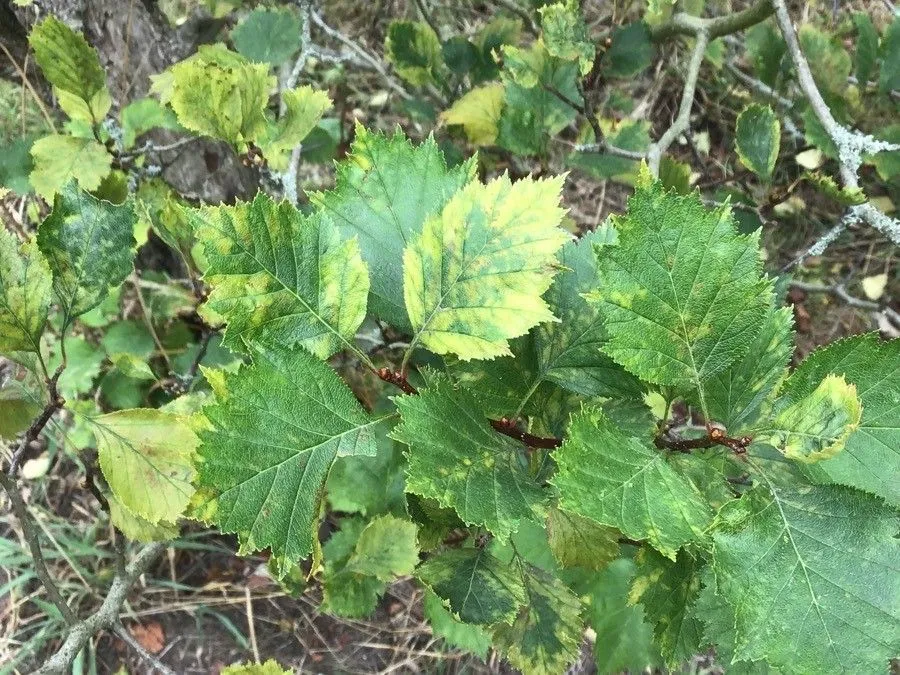
Author: Wendl.
Bibliography: Hort. Dendrol.: 168 (1853)
Year: 1853
Status: accepted
Rank: species
Genus: Crataegus
Vegetable: False
Observations: SE. Canada to NC. & E.U.S.A.
The Frosted Hawthorn, scientifically known as Crataegus pruinosa, is a captivating species of hawthorn belonging to the Rosaceae family. This deciduous tree is distinguished by its distinctive frosted appearance, a feature that endows it with a unique charm in both wild landscapes and cultivated gardens.
Native to the temperate regions of Southeastern Canada and extending down to North Carolina and the Eastern United States, the Frosted Hawthorn thrives in a variety of habitats, including woodlands, thickets, and along the edges of forests. Its adaptability to different soil types and environmental conditions makes it a resilient and versatile plant.
The name “pruinosa” hints at the frosted or powdery coating that covers its small, red to orange fruit, known as haws, giving them a distinctive, almost magical appearance. These berries are not only decorative but also provide a vital food source for various bird species during the colder months, making the tree an important component of the local ecosystem.
In addition to its ornamental and ecological value, Crataegus pruinosa has been noted for its potential medicinal properties. Historically, various parts of the hawthorn, including its berries, leaves, and flowers, have been used in herbal remedies aimed at supporting heart health and improving circulation.
The Frosted Hawthorn typically grows into a small to medium-sized tree, reaching heights of 15 to 20 feet. It features a dense crown with intricately lobed, dark green leaves that turn a striking shade of red or orange in the fall. In spring, the tree bursts into a profusion of white or pale pink blossoms that not only add to its aesthetic appeal but also attract a range of pollinators such as bees and butterflies.
Given its historical introduction in horticultural literature dating back to 1853, as documented in “Hort. Dendrol.: 168” by the author Wendl., the Frosted Hawthorn stands as a testament to the enduring appeal of well-documented plant species. Its rich history and continued relevance in botanical studies and environmental conservation underscore its importance as both a natural and cultured species.
In summary, Crataegus pruinosa, the Frosted Hawthorn, is a remarkable specimen within the Rosaceae family. Its striking aesthetics, adaptability, and ecological contributions make it a valuable plant worthy of appreciation and study. Whether admired for its beauty or utilized for its beneficial attributes, the Frosted Hawthorn continues to enhance both natural ecosystems and human-designed landscapes.
Eng: waxy-fruit hawthorn
En: Frosted hawthorn, Frosty hawthorn, Scarlet-thorn, Waxy-fruit hawthorn, Waxyfruit hawthorn, Waxy-fruited hawthorn
Fr: Aubépine givrée, Aubépine à fruits cireux
Taken Oct 1, 2020 by Diego Alex (cc-by-sa)
Family: Myrtaceae Author: (F.Muell.) K.D.Hill & L.A.S.Johnson Bibliography: Telopea 6: 402 (1995) Year: 1995 Status:…
Family: Rubiaceae Author: Pierre ex A.Froehner Bibliography: Notizbl. Bot. Gart. Berlin-Dahlem 1: 237 (1897) Year:…
Family: Sapindaceae Author: Koidz. Bibliography: J. Coll. Sci. Imp. Univ. Tokyo 32(1): 38 (1911) Year:…
Family: Asteraceae Author: A.Gray Bibliography: Pacif. Railr. Rep.: 107 (1857) Year: 1857 Status: accepted Rank:…
Family: Fabaceae Author: Medik. Bibliography: Vorles. Churpfälz. Phys.-Ökon. Ges. 2: 398 (1787) Year: 1787 Status:…
Family: Aspleniaceae Author: (Cav.) Alston Bibliography: Bull. Misc. Inform. Kew 1932: 309 (1932) Year: 1932…